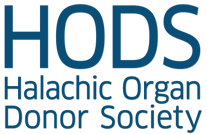Talmudic Analysis Part II
|
Rabbi Gedaliah Rabinowitz Rabbi Rabinowitz: Well, anytime anybody has seen a slaughtering of a chicken, you chop off the head of a chicken, the chicken will still run after the head after the head is chopped off, but nobody is going to say the chicken is alive, the chicken is dead. That’s what the Mishna says there. But that itself is still not enough evidence. The Rambam explains the Mishna, and the Rambam states in his explanation of the Mishna, that when… what do I consider a sign of life. If the power of movement comes from a central source, the words he uses and the translation that we have of the perush in the Mishna,”shoresh baschola achas”, it comes from a central route or source, that’s where the power of the body comes from. And he’s using that to explain the Mishna that says, therefore if you see movement in the body after the head has been chopped off, this movement is irrelevant. That being the case, we are convinced there is no other way to explain it, except to say that the source of movement in the body is the brain, whatever other movements, or local movements, or what you call simple reflexes, they’re not a sign of life. That is our basic source, and when you have brain stem death, so it is the source of movement in the body is dead, is not functioning anymore. What we are really saying is that brain stem death, is equivalent to chopping off the head, and just like chopping off the head, there’s no question everybody agrees that’s death, likewise, brain stem death is also death.
Interviewer: “Some people say that if you read the Mishna literally the Mishna says decapitation, and you’re making a jump, you’re saying it’s analogous to decapitation, but really it’s not decapitation. So the question is halachically what right do we have to take the Mishna is very literal and say well, our case today is ki’ilu.”
Rabbi Rabinowitz: As I said, and I’ll repeat what I’ve said – if you take the Mishna by itself, you may have a case. However, the Rambam explains the Mishna, and the Rambam states clearly, explicitly, he says, because the power of movement is not coming from a central source.
Interviewer: “Some people think that the movement of the newt’s tail, le ta’ah, is sporatic and spasmic.”
Rabbi Rabinowitz: Yea, so?
Interviewer: “but the heartbeat is a rhythm and they feel that somehow this kind of movement is different than a spasmatic movement. But what you’re saying, basically, is that it doesn’t make a difference because neither one is coming from the head. If it’s not coming from the head, it’s not coming from the brain, they’re both considered just movements on their own, reflexes…”
Rabbi Rabinowitz: They are autonomous movements.
Interviewer: “In your article, that I didn’t finish reading, but I read most of it yesterday, you mention that the Rambam seems to contradict himself where talks to the Morah Nevuchim and says that really the heart is the center of movement in the body, and then you went on to say that somehow somewhere, someone says that the heart is the center of movement and that pushes it forward to the brain, and then the brain sends it out to the rest of the body. But I don’t remember the details, and if you don’t remember the details then I don’t want to…”
Rabbi Rabinowitz: I more or less do remember that. I ran into a problem: The Rambam in Morah Nevuchim was, if I recall correctly, influenced by Greek philosophy and Greek science. The Rambam’s Morah Nevuchim and in the history of Greek medicine, there was a controversy between Apocrates and Gaelin, if I recall correctly. I stand to be corrected. Apocrates believed, the source of life, the source of movement in the body is in the heart. Gaelin believe that the source of life, or the source of movement in the body, is in the brain. The Rambam there is not dealing with halacha. He’s dealing with, I don’t know what it is he’s dealing with, but he’s not dealing with halachic issue. The Rambam in perush HaMishnah is explaining a Mishna which is a halachic statement, and he’s explaining it so. What he states in Morah Nevuchim seems to run counter to what he says in Ohalos, and if I recall I found a source where you can say that the Rambam some way or another has somehow reconciled the two, by stating that the heart governs the brain, and the brain governs life and the movement in the body. That’s just to solve a problem in how the Rambam himself reconciled these two statements, but the Morah Nevuchim is not a halachic statement. Moreover, it’s not relevant as a halachic issue. Even if the heart governs the brain, but the brain is not functioning, there still is no life in the body. It’s like taking the heart outside and the heart’s beat.
|
|
